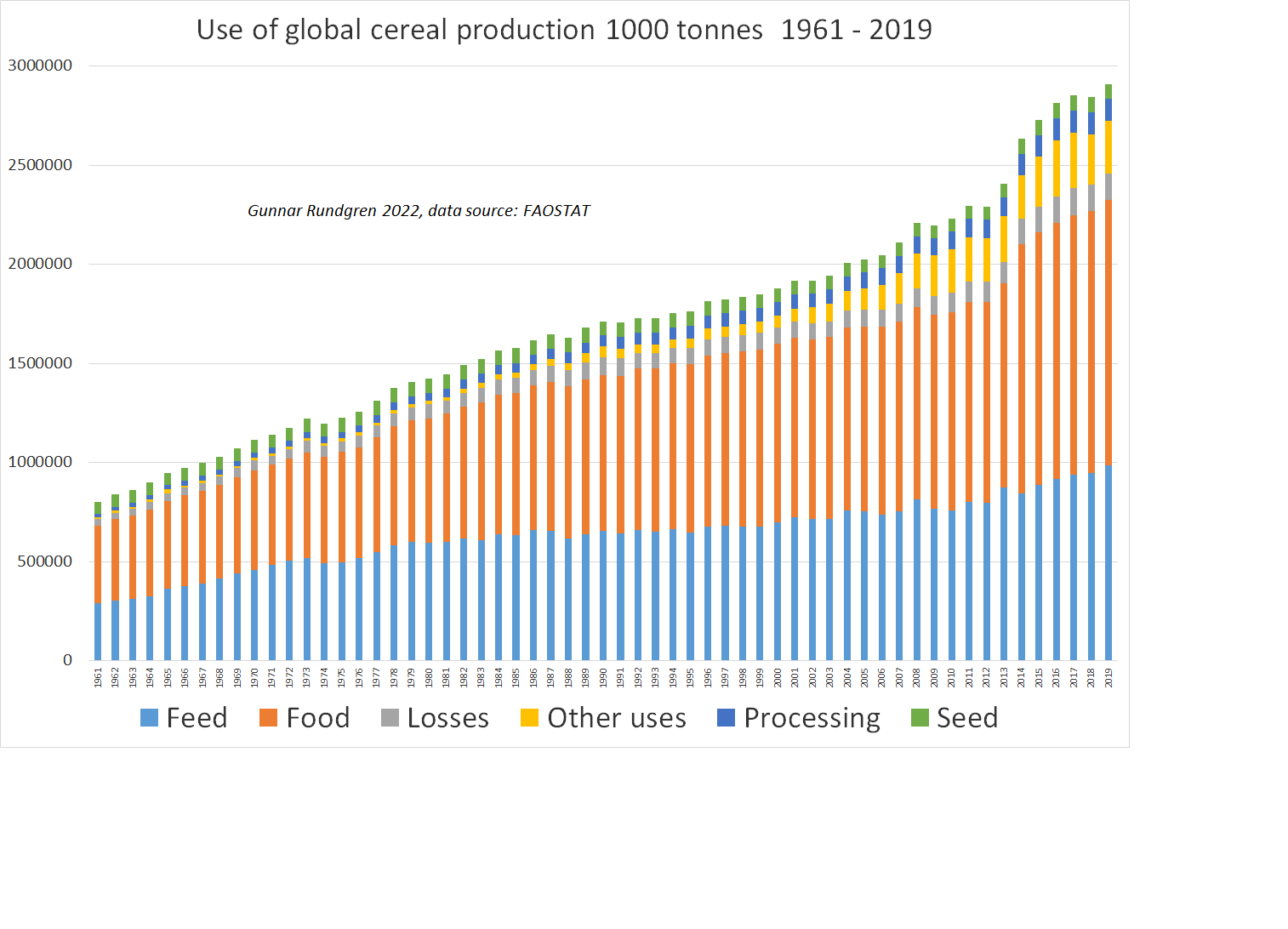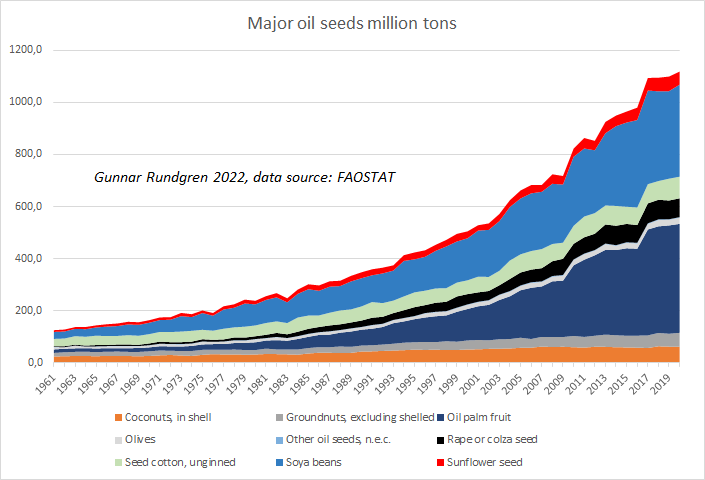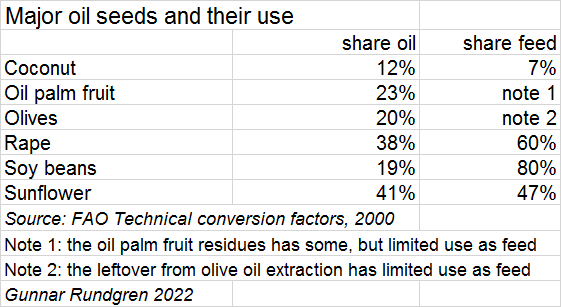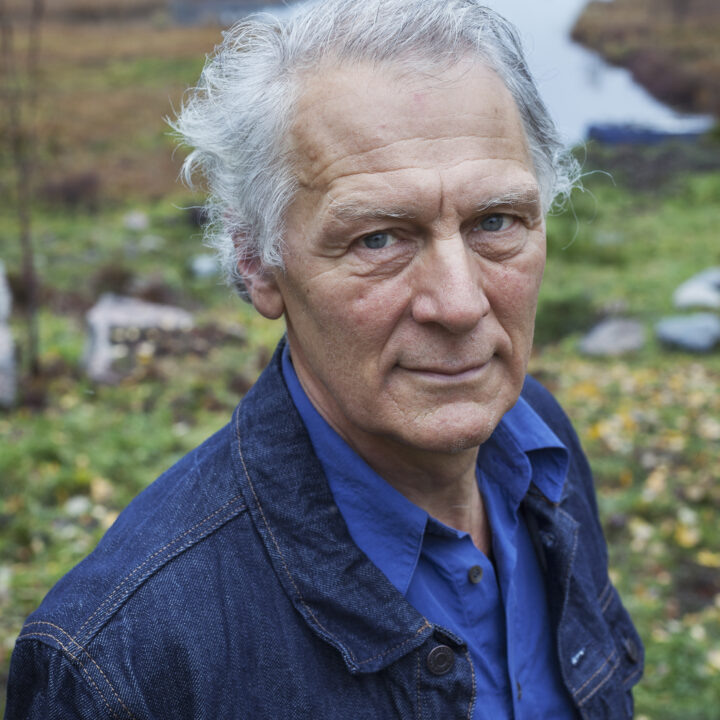Ed. note: Part 1 of this series can be found on Resilience.org here.
Perhaps you have seen the movie Unforgiven where Clint Eastwood is a retired gunman that raise pigs. Why did he raise pigs? When the prairies were plowed and sowed the result was a huge oversupply of grain and plunging prices. In many cases it was not even possible to ship it to the market because transport was very expensive if you lived far from the railroad. The economic response was to convert grain to a higher valued commodity – pigs. “Pigs became known as “cornfields on legs,” because you could feed your corn to pigs and then walk the pigs to markets that might be a thousand miles away” says Cynthia Clampit in an interview about her book Pigs, Pork, and Heartland Hogs.
Feedlots use grain to feed cattle and industrial chicken and pig production is based on grain and soy. This has caused the amount of grain fed to livestock to increase with 250% since 1961. The share of the global cereal output that is devoted to animal production has, however, not increased at all in the same period. Both people and animals consume more cereals and the proportion between the two uses remained almost constant the last sixty years. In 1961, 49% of the cereals were used as food and 36% as feed, in 2019, 45% and 33% respectively. Expressed per capita use as food went from 127 kg per person per year to 174 kg and as feed from 93kg to 129kg.

Notably, one can’t conclude that the quantity of cereals eaten by livestock could have been eaten by people. To begin with, there is no one there to buy it, both because those that can’t eat enough have no money to buy for, and most importantly, the production is far bigger than human needs as food. In addition, what the statistics say is consumed as food or feed is not whole grain but various fractions of the grain. Wheat is mostly consumed as white flour, which is just around 80% of the wheat kernel. The bran is mostly used as animal feed. 25% of the paddy rice harvest is composed of hulls and the whole rice is mostly eaten as white rice, where another 15% is lost as bran, which means that less than 65 % of the rice harvest is actually eaten by humans. Rice bran is used as animal feed while the husks are hard to digest even for ruminants and are therefore often not used even as feed (they can be used as bedding for animals, compost etc.). If you make oat milk, 50 percent of the oat harvest goes to animal feed. The production of ethanol from corn or wheat results in huge quantities of distillers’ grain which is also fed to animals.
In addition, a lot of grain doesn’t live up to the expectations of the market. There is no reliable global statistics of this, but in my own research I concluded that between a fifth and a quarter of the Swedish harvest of oats and barley is rejected by the market. For wheat there is a constant oversupply in the market which means that a significant share of wheat grown for human consumption will be used as feed (for a lower price). Clearly, there are farmers that grow wheat, corn or barley with the purpose to feed their animals. And there are commodity farmers that grow grain, especially corn, which already at the time of sowing is destined to the feed market. It is not possible from the global statistics to conclude how much of the grain eaten by animals that fall under this category. My educated guess is that it is a bit more than half. It is therefore not all correct to state that one third of the grain is grown to feed livestock, just because one third of the grain is fed to livestock.
Feeding grain to livestock, especially to pigs, has quite a long history not only in the USA. Grains have some limitation as animal feed, mainly that they are low in protein. This meant that you had to “overfeed” pigs with grain in order for them to get enough protein. Those pigs grew somewhat slowly and they become fat (the same seems to happen to people that eat high energy, low protein food by the way). There was therefore a missing component for the use of grain for animal feed – a feed with high protein content to complement the grains. Here oilseed cakes come in. And sure they did.
Vegetable oils were rare before WWII. The main reasons were that the production of animal fat as lard, tallow and in particular butter was fairly high, that the vegetable oils had an unpleasant taste and that the by-products had no market/economic use. Through processing advances the oils could be refined and deodorized and the by-products could be converted into livestock feed (I describe this in more detail in Global Eating Disorder).

The production of oil crops has increased tremendously, in particular oil palm and soy bean (see graph). As can be seen from the table most oil crops also produce considerable shares of animal feed. In the production of palm oil, the fruit bunches has palm oil in the flesh, around 19% of the weight. In the kernels which constitute 6% of the weight approximately half is oil. The meal from the kernels is used as animal feed. The empty (after oil extraction) fruit bunches have a high water content and is mostly not used as animal feed but recycled to the fields. Soybeans is the major oil crop with the lowest oil content and the meal has high protein content making it the benchmark for oil seed cakes. Rape seed cakes and sunflower cakes are also important animal feed sources.
 Pigs are still the number one consumer of grain and oilseeds, but chicken is catching up. Chicken converts grain better into meat than pigs. The combination of industrial vegetable oils and “advances” in chicken production (veterinary medicine, feed supplements etc) allowed indoor large-scale production of chicken based on grain and oil seeds. Chicken went from a luxury food to the cheapest meat, from 1960 the “chicken race” started (see my previous article).
Pigs are still the number one consumer of grain and oilseeds, but chicken is catching up. Chicken converts grain better into meat than pigs. The combination of industrial vegetable oils and “advances” in chicken production (veterinary medicine, feed supplements etc) allowed indoor large-scale production of chicken based on grain and oil seeds. Chicken went from a luxury food to the cheapest meat, from 1960 the “chicken race” started (see my previous article).
To feed cattle with grain was harder. First, their conversion rate of feed to meat is much lower than pigs or chicken, so it will always be more costly. Secondly, cattle are not well adapted to eating grain and soy so they get sick if they get too much or for a long time. Still, as long as grain and soy is cheap quite a lot goes to cattle, especially dairy cows and feedlot cattle. On a global scale feedlots are however not the norm, most cattle for meat is predominantly fed on pasture, fodder and other roughage.
The increased consumption of vegetable oils goes hand-in-hand with the increased consumption of pork, chicken and dairy products. In the market place there is a fight between butter and margarine. On the production side the margarine (vegetable oils) is cheap because you can sell the oil cakes to the livestock industry, including dairy operations and the butter is produced with the help of oil seed cakes. Before the large scale production of vegetable oils the fat of the pig was almost as valuable as the meat itself and pigs were much, much fatter than they are today. Also here, there is a synergetic relationship between the vegetable oils and the meat. The oil seed cakes allowed swine producers to produce pigs much quicker. Meanwhile, the meat also became much leaner. In that way, the reduced supply of animal fat which is a result of the use of oilseed meal as a feed also increased the market for vegetable oil.
By and large there is a far too simplistic debate about the role of livestock in our food and agriculture systems. To feed by-products or second grade grain to livestock is just common sense and a good utilization of resources, and gives us more food for less resources used compared to a system where no livestock products are consumed. On the other hand, if the production of the main product is harmful, the use of the by-product is supporting that harmful production. Most production of grain and oil crops is intensive and degrading for soils and it would probably be better that we would grow less of them.
But what shall people eat then? ….you can go on discussing these things forever. The answer is not to be found in global statistics as the context is so different. In addition, there are many hundred million farms where people take daily decisions what to do or not do. If you are a retired gunslinger with a small homestead in the middle of nowhere, the right thing to do may not be the same as if you run a horticulture farm in the Netherlands.
Teaser photo credit: By H2O – own picture/copied from en:Image:Feedlot-1.JPG, CC BY-SA 3.0, https://commons.wikimedia.org/w/index.php?curid=931624






